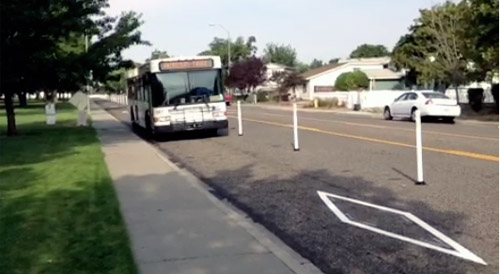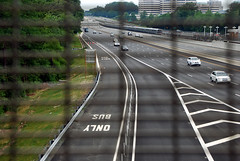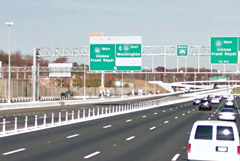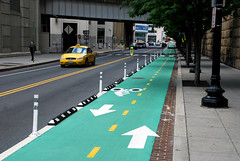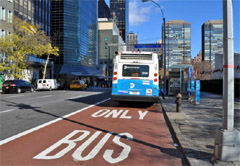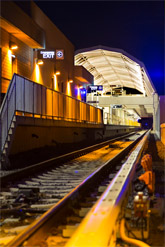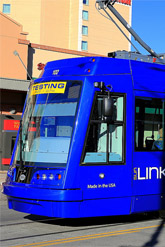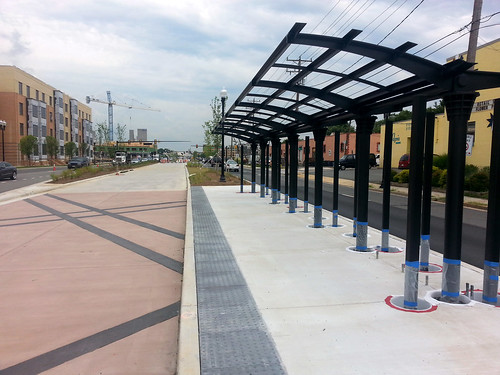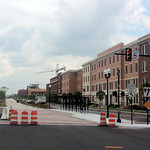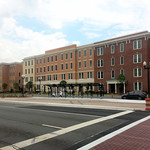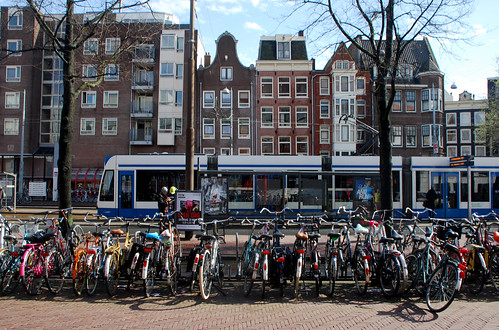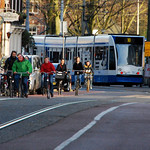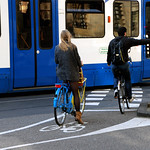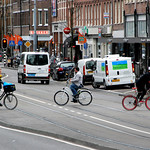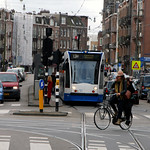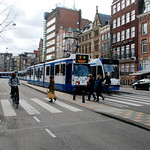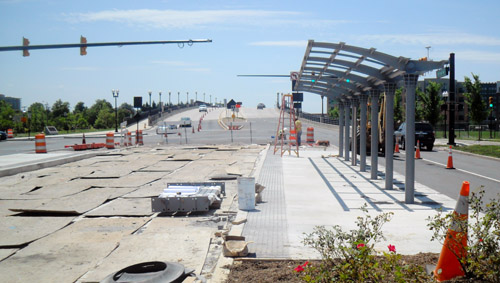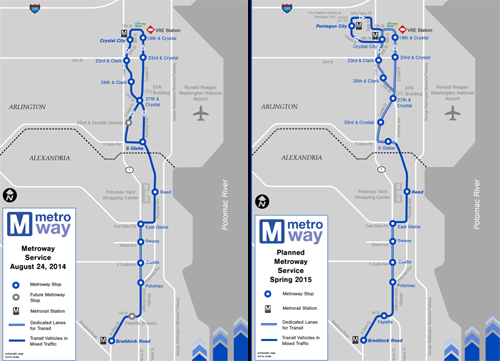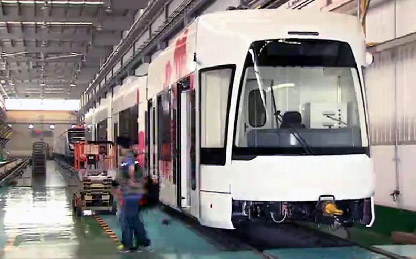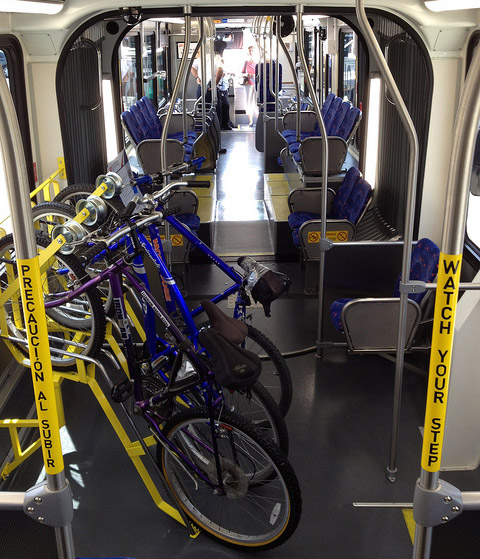As DDOT begins to crystallize plans for a north-south streetcar, four big questions will drive what the line ultimately looks like: How will the line snake through the center of the city, will it reach Silver Spring, where will there be dedicated lanes, and is there any money to actually build anything?
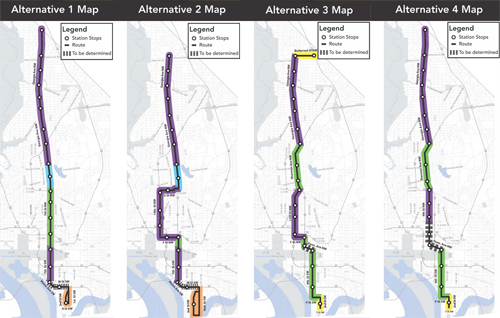
Four route alternatives under study. Dedicated lanes could potentially fit on the purple and light blue sections. Image from DDOT.
DDOT’s planners are still months away from settling on final details for the North-South Corridor. But at a series of public meetings last week, these big questions came into focus.
How will the line snake through the center of the city?
DDOT’s latest report focuses on four potential alternate routes, but project manager Jamie Henson says DDOT could still mix and match components of multiple alternates to create the final path.
North of Petworth, DDOT has settled on a Georgia Avenue streetcar alignment going at least as far north as Butternut Street.
The line could run south from Petworth down Sherman Avenue as far as Florida Avenue, or it could stay on Georgia. Georgia is wide enough for dedicated lanes and is lined with shops instead of houses, so it would probably attract more riders, but Sherman would offer a more stark contrast to the route 70 Metrobus.
South of Florida Avenue things get really interesting.
The route could stay on 7th Street through downtown DC, but that duplicates Metrorail’s Green Line, and 7th Street isn’t wide enough for dedicated lanes. Or it could travel on 14th Street, where population density is most concentrated and where it’s a long walk to any Metro stations. But 14th Street is already booming; a streetcar might help more elsewhere.
11th Street and 9th Street are intriguing possibilities. Infill and commercial development have lagged there relative to 14th Street. Would a streetcar bring a 14th Street-like boom? Meanwhile, both 11th and 9th are wide enough for dedicated lanes.
9th Street is already home to one of DC’s only existing bus lanes. Though the bus lane is lightly used and poorly enforced, that might make 9th a particularly easy place to add streetcar lanes.

Existing 9th Street bus lane.
To traverse the National Mall, the line could either turn onto F Street through downtown and then use 7th Street to go south, or it could turn onto Pennsylvania Avenue and then use 4th Street.
The F Street to 7th Street option seems to be a path of less resistance, could fit dedicated lanes, would be more central to the National Mall, and would directly serve The Wharf development at the Southwest waterfront. On the other hand, 4th Street would better serve the existing Southwest neighborhood.
Will it reach Silver Spring?
Silver Spring is a natural end point for this corridor. It’s big, dense, and already one of the DC region’s largest multimodal transit transfer points.
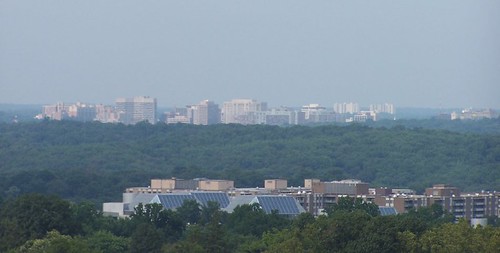
Silver Spring.
Around 4,000 DC-bound passengers board WMATA’s route 70 Metrobus in Silver Spring every day, with still more boarding the parallel S-series routes. There’s tremendous opportunity for the streetcar to reach more people and have a greater impact by ending in Silver Spring instead of DC.
But for that to happen, Maryland and Montgomery County have to step up with plans of their own. DDOT has neither authority to plan nor money to build outside the District’s boundaries.
So for now, DDOT is keeping its options open. But eventually they’ll need to make a decision. At this point, it’s on Maryland to come to the table.
Where will there be dedicated lanes?
Whether or not the streetcar will have dedicated lanes depends on two factors: Is there adequate width on the street, and is there enough political support to repurpose lanes from cars?
The first factor is easy. This chart shows potential street cross-sections, color-coded to match street segments along the route alternatives maps.
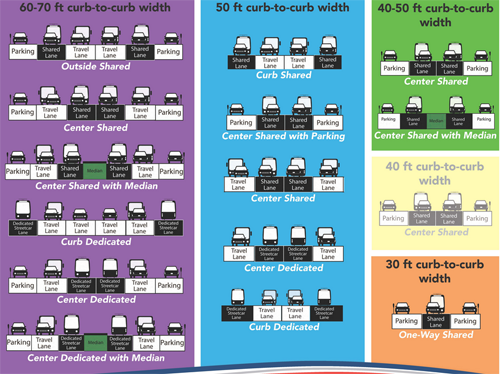
Potential street cross-sections, color-coded to the map above. Image from DDOT.
Streets color-coded as either purple or blue are wide enough to potentially fit dedicated lanes. Streets coded as green, yellow, or orange are not.
The political factor is harder. Depending on the location, providing dedicated streetcar lanes might mean eliminating or reducing on-street parking, pushing truck loading onto side streets, or any number of other trade-offs.
DDOT’s ridership forecasts say shaving 5 minutes off streetcar travel time would boost ridership 11%. If true, that suggests thousands more people would ride a streetcar with dedicated lanes than without.
And of course, the inverse is true too: Without dedicated lanes, many riders who could be on the streetcar might instead opt to drive.
At public meetings last week, representatives from the Georgia Avenue business community voiced strong objections to dedicated lanes, fearing that loss of parking would hurt their stores. But if dedicated lanes add more streetcar riders to a block than they remove parking spaces, the reverse could very well be true.
Is there money to actually build anything?
Thanks to Chairman Mendelson and the DC Council cutting streetcar funding in the latest budget, DDOT lacks funding to build this line.
It’s possible the council could add more money in future budgets, or DDOT could seek alternate funding options like the federal New Starts program. But for now, this line is unfunded and there’s not yet any apparent strategy to change that.
In the meantime DDOT will continue to plan, with the next step being an environmental study. But all other details pale next to the overarching and unanswered question of how to fund whatever the studies recommend.
 Cross-posted at Greater Greater Washington.
Cross-posted at Greater Greater Washington.










